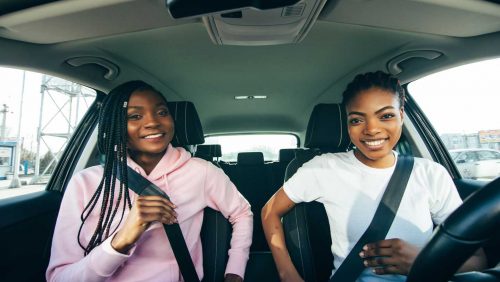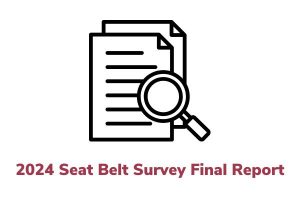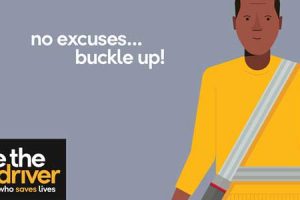Seat Belts
Wearing a seat belt is the single most effective way to prevent death and serious injury in a car crash. Wear your seat belt – every seat, every ride, every car.

Nine out of ten Maryland front-seat drivers and passengers wear their seat belt, but our goal is 100 percent. Each year, thousands of unbelted drivers and passengers are seriously injured or killed on our roads. The vast majority of those injuries or deaths could have been avoided if those people had been properly buckled at the time of their crash. It takes three seconds to buckle up but it can make a lifetime of difference.
OCCUPANT PROTECTION DRIVING FACTS:
Failure to wear a seat belt is a leading cause of fatalities resulting from motor vehicle crashes. See all crash data.
-
112
More than one out of three (36 percent) of motor vehicle occupants killed were not wearing their seat belt.
If everyone buckled up, about 45-50 lives could be saved each year in Maryland.
-
2,256
The average number of motor vehicle occupant (driver/passenger) injuries resulting from the decision not to wear a seat belt.
Be the BUCKLED UP Driver and always make sure you and your passengers are buckled before driving.
Seat Belts Save Lives
Common excuses such as “it takes too long,” “it rubs my neck,” and “I’m only driving a short distance” are invalid excuses for not buckling up. It takes three seconds to buckle up and the slight irritation you might feel may end up saving your life if you are in a crash.
Unrestrained occupants of vehicles become deadly projectiles in a crash, injuring others as they are thrown around inside the vehicle—and, in many cases, ejected through a window. Occupants ejected from vehicles are 90 times more likely to be killed in the event of a crash. Unbelted passengers in the back seat are especially dangerous as their bodies can become a projectile, potentially hurting the driver and other passengers as well as themselves.
Consider this too – if a driver is unbuckled, 68 percent of the time the children in that vehicle will not be buckled either. Adults who don’t buckle up are sending a deadly message to children, as well as other passengers, that it’s okay not to use seat belts. Learn more about Child Passenger Safety.
Be the BUCKLED UP Driver. Wear your seat belt every time you get in a vehicle, whether it is a personal vehicle or rideshare, and make sure all passengers are belted.
Seat Belt Myths
Below are common misconceptions about seat belts.
Air bags are designed to work with seat belts. Even with an airbag, you are much safer buckled up as well. In fact, seat belts keep you safer alone than just an airbag. Air bags are not enough protection; in fact, the force of an air bag can seriously injure or even kill you if you’re not buckled up.
Many people use the excuse that a seat belt will trap them in the event that a vehicle catches on fire or is underwater. In reality, fire or water are involved in .05 percent of all crashes. In addition, wearing a seat belt can help keep you conscious and able to escape a crashed vehicle.
Short, routine trips can be some of the most dangerous. Most crash-related deaths happen within 25 miles from home and at speeds of less than 40 mph.
Between broken glass, loose objects in the vehicle, or passengers, anything in a crash can hurt you. However, a properly worn seat belt will keep you in place, while other vehicle technology can lessen the impact of the crash. It is typical that following a crash when wearing a seat belt can result in minor injuries to the shoulder and chest area (normally bruising) but it still lessens the severity of overall injuries.
Trucks and SUVS are much more prone to rollover in a crash or while driving at high speeds. A seat belt can reduce the risk of fatal injury to the driver and front-seat passengers in SUVs, pickups, and vans by 60 percent.
Unbuckled? What’s Holding you Back?
In an effort to demonstrate the differences in being buckled vs. unbuckled in a rollover crash, MHSO has the Rollover Simulator available for community events.
To request this educational resource for a community event, please complete this form.


